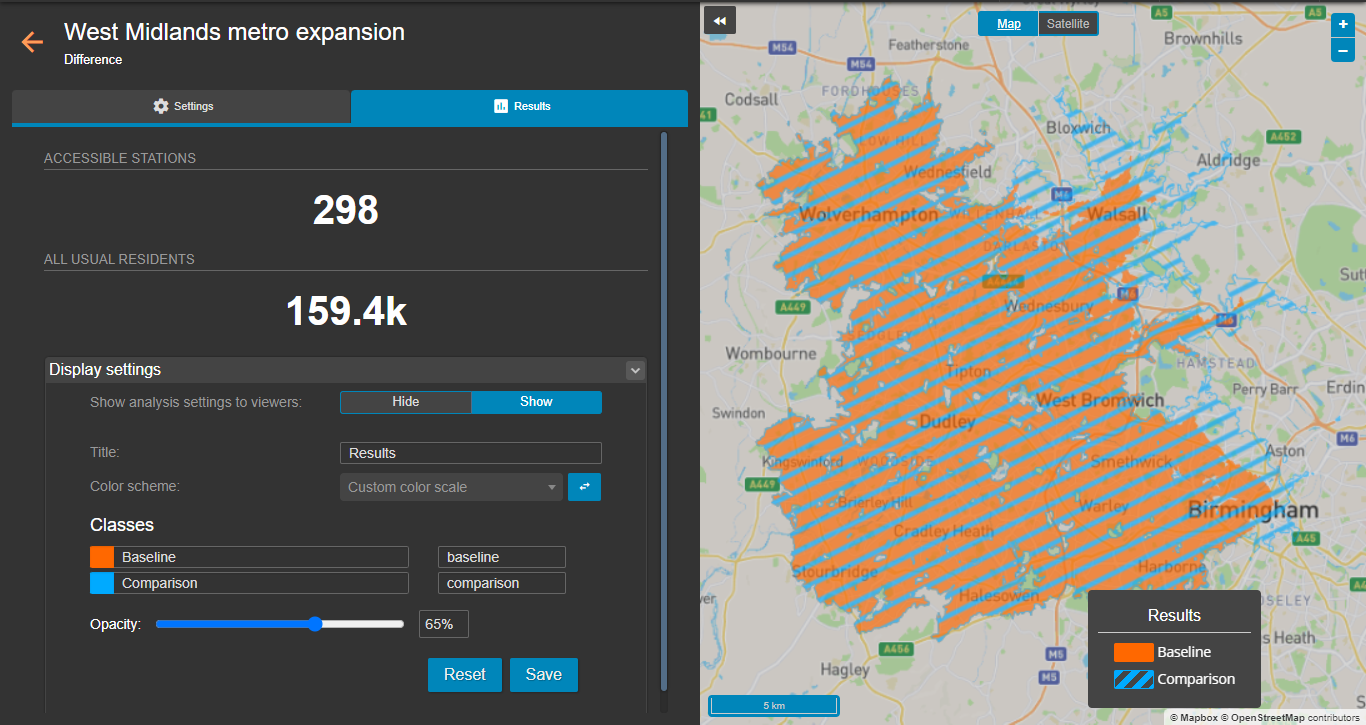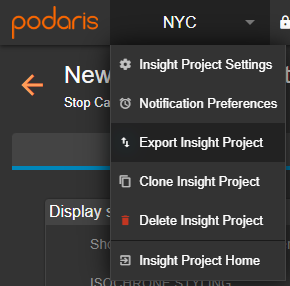The difference analysis type allows you to compare the difference in accessibility between two networks through isochrones

What is Podaris:Insight?
Podaris:Insight is a toolkit for simplifying a number of types of accessibility analysis. It is designed to dramatically speed up the process of performing accessibility analysis on networks and datasets created or imported in Podaris. It provides a simple interface through which analysis projects can be created and shared, and the corresponding results exported. You can learn more about Podaris:Insight and the analysis types that it offers here.
What is the difference analysis type?
The difference analysis type allows you to specify two networks, locations to travel to or from, transit types, and (optionally) datasets and associated queries (which may be used to perform demographic analysis, for example). You can then compare the difference in accessibility between the two networks.
This analysis type can be used to discover the locations reachable by car, cycling, walking or transit within a given maximum duration (or maximum journey time).
At least one location must be specified as a to or from location - however multiple locations can be added either manually or uploaded in the form of a geospatial data file (e.g. geojson).
Using dataset queries
Datasets and their associated queries can be used to quantify accessibility and answer demographic questions such as "how many more (or fewer) residents have access when the baseline and comparison networks are compared?".
Step by step
1. Add basic information such as a name and description that will be visible to viewers of the project.
2 Select a baseline (do nothing) network and a comparison (do something) network, as their views. It is possible to use different views from the same network project for your baseline and comparison.
3. Add at least one location. This can be plotted manually or uploaded. These will be either the origin or destination points for your isochrones, depending on whether from or to is selected in as the 'Type' under Transit Options.
4. Select associated isochrone options. When using the transit mode, calendars associated with your networks will be used to inform calculations. Multiple departure times set in depart at can be specified, and Podaris will calculate the best accessibility from those times.
5. Add a dataset and an associated query if you wish to quantify accessibility.
6. Click Save and Run Analysis. You will be notified when the analysis is complete.
Interpreting results

Difference analysis employs colour coding to visualise the difference in accessibility between the baseline (by default, orange) and comparison (by default, blue hashed) networks.
The change in accessible stations is indicated (e.g. 298 more stations are accessible with the comparison network in the example above) alongside any calculations performed using a dataset query set in step 5.
Exporting results

Your analyses can be exported by clicking the project name, and Export Analyse. From here, you can export in a variety of formats, such as GIS and CSV (comma separated values).
Isochrone difference analysis video walkthrough
